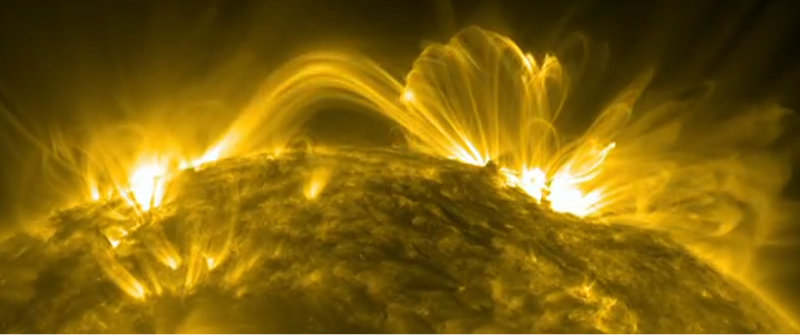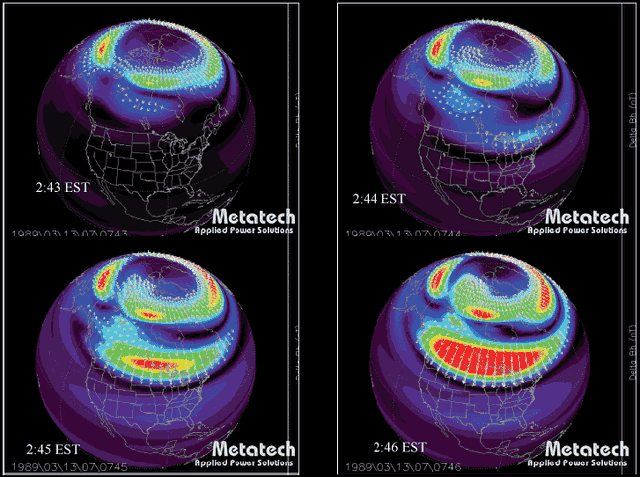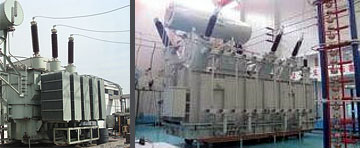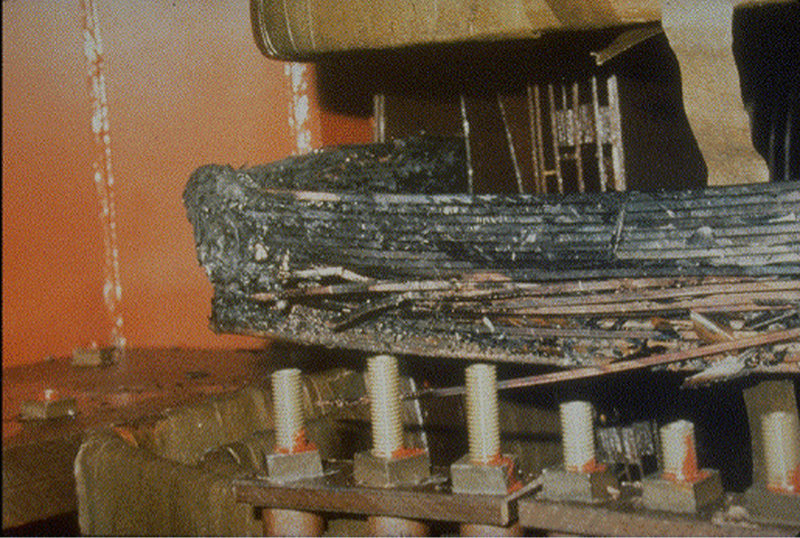Quebec Blackout 1989 – Power Grid Geomagnetic Storm Vulnerability

The Quebec blackout of 1989. Could it happen again? Or worse? Yes, it surely could. And eventually certainly will.
Our Most Critical Infrastructure – The Electric Power Grid
The electrical power grid. It’s infrastructure is clearly one of our society’s most important assets. Enabling our reliance on digital technology and just-in-time delivery distribution systems. We have come to depend on the reliable delivery of electricity to power nearly every aspect of our lives.
The electric power grid is one of our most critical infrastructures. It underpins nearly everything. Because of this, the reliability of the power grid has become a necessity to keep most of us alive.
The North American electric power grid system. 200,000+ miles of high-voltage transmission lines. Thousands of power generation plants. And millions of digital controls.
Complexity of The Grid
More than 1,800 entities own and operate parts of the system across North America. These entities range in size from large investor-owned utilities with over 20,000 employees, to small cooperatives with only ten.
Because of the numbers involved, there are many various differing methods, configurations, and designs employed within the overall system. This adds layers of complexity when considering vulnerabilities and solutions to hypothetical problems.
Geomagnetic Threat
Geomagnetic disturbances, the earthly effects of solar weather, are a threat to the electric sector. Geomagnetically-induced currents on system infrastructure have the potential to result in widespread tripping of key transmission lines and irreversible physical damage to large transformers.
The 1989 event that caused a blackout of the Hydro Quebec system proved beyond a doubt of the geomagnetic vulnerabilities and their potential consequences.
The physical damage of certain system components (e.g. extra-high-voltage transformers) on a large scale, could result in prolonged outages as procurement cycles for these components range from months to years. Many of these components are manufactured overseas. North America has little manufacturing capability remaining in this regard.
Geomagnetic Storms – CME
Intense solar activity. Large solar flares and associated coronal mass ejections. They create disturbances when this activity is directed towards the Earth. The coronal mass ejection’s solar wind plasma can connect with the Earth’s magnetosphere. Consequently, causing rapid changes in the configuration of Earth’s magnetic field. A geomagnetic storm.
Geomagnetic storms produce impulsive disturbance of the geomagnetic field over wide geographic regions. In turn, these storms induce currents (called geomagnetically-induced currents or GIC) in the complex topology of the electric power grid system and other high-voltage power systems across the globe.
A number of investigations have been carried out (EMP Commission, FEMA under Executive Order 13407, Federal Energy Regulatory Commission, the Departments of Energy, Homeland Security, and Defense). These investigations examined the potential impacts on the U.S. electric power grid for severe geomagnetic storm events and EMP threats. As a result, these assessments indicate that severe geomagnetic storms have the potential to cause long-duration outages to widespread areas of the North American grid.
Quebec Blackout 1989, March 13-14
Most well-known in North America is the March 13-14, 1989 geomagnetic storm. It caused the Quebec blackout of 1989. This storm led to the collapse of the Hydro Quebec system in the early morning hours of March 13, 1989.
Starting at 2:44 AM (EST), operations on the Hydro Quebec power grid were normal. At that time a large impulse in the Earth’s geomagnetic field erupted along the U.S./Canada border.. This started a chain of power system disturbance events that only 92 seconds later resulted in a collapse of the Quebec Interconnection.
The geomagnetic storm causing this event is believed to be the result of two separate events known as coronal mass ejections (CME) on March 10 and 12, 1989. A few days before, on March 6, a very large X15-class solar flare also occurred. Several days later, at 01:27 UT on March 13, a severe geomagnetic storm struck Earth. The storm began on Earth with extremely intense auroras at the poles. The aurora could be seen as far south as Texas and Florida!
Also Affected The United States Power Grid
The Quebec Blackout was by no means a local event. Some of the U.S. electrical utilities had their own cliffhanger problems to deal with. New York Power lost 150 megawatts the moment the Quebec power grid went down. The New England Power Pool lost 1,410 megawatts at about the same time. Service to 96 electrical utilities in New England was interrupted while other reserves of electrical power were brought online. Luckily, the U.S. had the power to spare at the time…but just barely. Across the United States from coast to coast, over 200 power grid problems erupted within minutes of the start of the March 13 storm. Fortunately none of these caused a blackout.
I found this online from a local eyewitness:
I found myself staring up at the sky on the night of March 13, 1989, with my girlfriend and her parents in the backyard of their house. The sky was on fire, almost literally. Red and pink sheets of plasma streamed out in a circle from directly overhead, with blue-white streaks like xenon flashes occasionally strobing across the sky. We could actually hear a sizzling, crackling sound around us. The four of us stood there, awestruck by the aurora borealis we were lucky enough to witness.
Wow, they could hear it sizzling and crackling!
Quebec Blackout 1989 Technical Details
Telluric currents induced by the storm created harmonic voltages and currents of considerable intensity on the La Grande network. Voltage asymmetry on the 735-kV network reached 15%.
Within less than a minute, the seven La Grande network static var compensators on line tripped one after the other…
With the loss of the last static var compensator, voltage dropped so drastically on the La Grande network (0.2 p.u.) that all five lines to Montreal tripped through loss of synchronism (virtual fault), and the entire network separated.
The loss of 9,450 MW of generation provoked a very rapid drop in frequency at load-center substations. Automatic under-frequency load-shedding controls functioned properly, but they are not designed for recovery from a generation loss equivalent to about half system load.
The rest of the grid collapsed piece by piece in 25 seconds.

Using the traditional NOAA geomagnetic storm indices. The March 1989 storm was ranked as the third largest storm of all time (since rankings started in 1932).
EHV – Extra High Voltage Transformers / Transmission Lines
The demand for electricity in North America has grown dramatically over the past 50 years. Therefore, to support these energy demands, the EHV (extra high voltage) transformer infrastructure has grown as well.
Geomagnetic Storm — The high-voltage transmission grid presents a complex network topology that couples almost like an antenna through multiple ground points to the geo-electric field produced by disturbances in the geomagnetic field.

The U.S. has 80,000 miles of extra-high voltage (EHV) transmission lines making up the backbone transmission grid. This enables the long-haul transport of electricity for our nation. EHV transformers are critical pieces of equipment on the transmission grid.
90% of consumed power passes through a high voltage transformer at some point. If these transformers fail, especially in large numbers, therein lies a very big problem.
EHV transformers are huge, weighing hundreds of tons. Consequently, transportation is difficult at best. In some cases, specialized rail cars must be used (and there is a limited supply of these). Many of the EHV transformers installed in the U.S. are approaching or exceeding the end of their design lifetimes (approx 30-40 years), increasing their vulnerability to failure.
EHV Transforms / Transmission Lines — Vulnerable to Severe Geomagnetic Storms
Technical:
The operating levels of high-voltage networks have increased from the 100-200 kV design thresholds of the 1950’s, to the 345 to 765 kV extra-high-voltage levels of today’s networks.
As a result, the ratio of resistances varies significantly with voltage class, as the resistance is approximately 10 times lower for the 765 kV than for the 115 kV lines.
In general, the higher the voltage rating, the lower the resistive impedance per unit distance (in ohms per km), which will in turn produce approximately 10 times larger Geomagnetic Induced Current flows in the 765 kV elements for the same geomagnetic disturbance environments.
The design of transformers also acts to further compound the impacts of GIC flows in the high voltage portion of the power grid. While proportionately larger GIC flows occur in these large high-voltage transformers, saturation of EHV transformers occurs at the same level of GIC current as those of lower-voltage transformers.
Transformers experience excessive levels of internal heating brought on by stray flux when GICs cause the transformer’s magnetic core to saturate and spill flux outside the normal core steel magnetic circuit.
Well-documented cases have noted heating failures that caused melting and burn-through of large-amperage copper windings and leads in these transformers.

Image: Damage to $10 million transformer in New Jersey as a result of 1989 storm.
These transformers generally cannot be repaired in the field. As a result, if damaged in this manner, they may need to be replaced with new units. Of concern, these units have manufacture lead times of 12–24 months or more in the world market.
Modern Civilization Would Perish
Without electricity, a high percentage of today’s modern civilization would die within a month, two at the most. It would be unimaginable horror.
Read the book, One Second After for a reality check…

(Some information in this article sourced from a report of the North American Electric Reliability Corporation and the U.S. Department of Energy’s 2009 Workshop titled, High-Impact, Low-Frequency Event Risk to the North American Bulk Power System)
